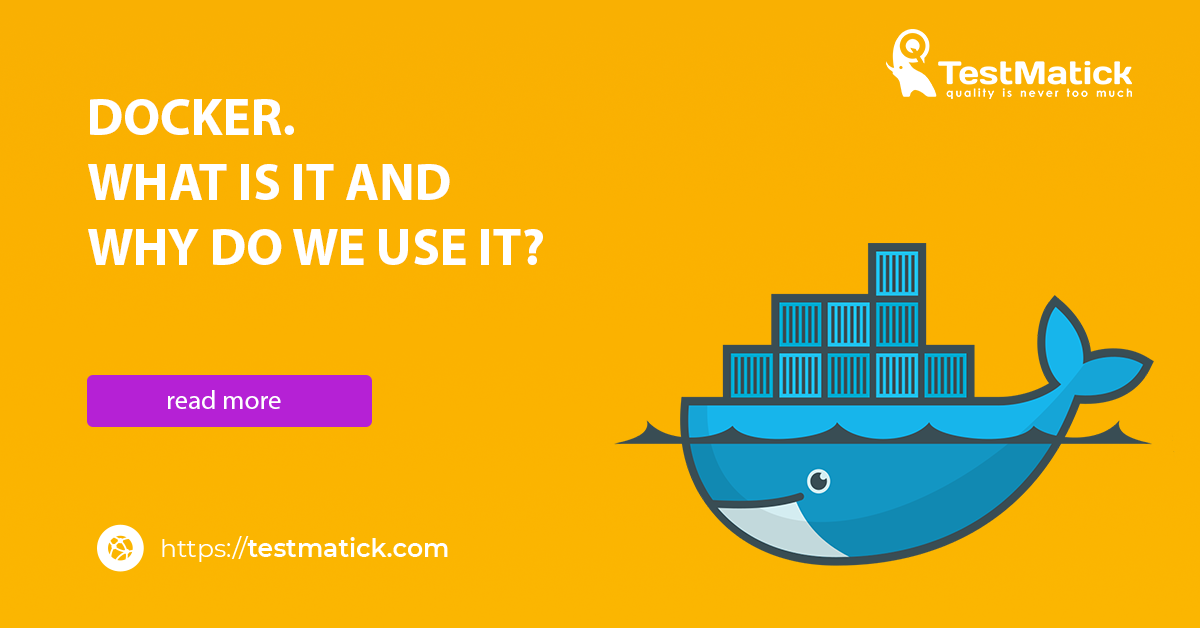Docker is a special container for all applications where everything is configured (from the operating system to the system architecture).
This software is actively used not only by developers of web applications but also by testers since it has quite a lot of useful functions that help to find various bugs in the day-to-day activity of a QA company.
This material contains a simple explanation of Docker using easy examples. The article won’t be full of monotonous and confusing technical terms and categories.
Imagine that you’ve bought a scooter. Let’s compare two shipping details.
- You’ve received each detail unassembled. The scooter is an extremely curious design with a lot of original parts. The assembly instructions are inconvenient and sometimes very outdated. Some parts look different, and some assembly steps are skipped.
- You’ve received the assembled scooter. Just get on it and go. It is already assembled by experienced specialists who can easily find the necessary details among numerous things and get everything together in the correct order.
This is the first feature of Docker – a user shouldn’t configure it. And it’s very convenient. Docker is a perfect option to solve problems when the user has set something wrong. It reduces the number of support requests and greatly facilitates software delivery. When somebody has already configured everything for you, you don’t have to worry that something won’t work as it should!
What’s the Difference Between Docker and Virtual Machine
Their principles of operation are very similar. But don’t think that Docker is a type of typical virtual machine (VM). Besides, it works on a slightly different level. So, what are the main difference between Docker and VM?
Classic VM is PC in PC, roughly speaking. It has its own hardware in a virtual environment: its OS, kernel and software components.
In contrast to VM, Docker cannot create a separate kernel. You don’t have to install an additional operating system, find some memory, and select processor power. Docker is performed by technology that allows code to run in separate namespaces. Code that is launched in such a way, is completely separate from the base system performance. But at the same time, it connects the RAM and the processor just like another program inside the system.
Basic advantages of Docker over a virtual machine:
- Any Docker starts much faster than any VM since it doesn’t need to reboot OS;
- Consumption of system resources (memory on a hard disk, RAM, processor) doesn’t increase by itself, since all capacities inside the container are used exclusively for running programs, and not for servicing the OS;
- Docker consumes much less space than VM, as it contains extremely useful programs and nothing more.
System Architecture of Docker
Docker has its own client/server architecture. There is a special client through which a user sends requests through RESTful API and Docker daemon, that is responsible for processing them, and also creates and helps start containers.
The server and the client can be located both on the same local machine or on different ones. Technically, nothing prevents users from connecting to the remote Docker server through their client. The Docker client acts as a command interface. In other words, a user needs to work through the console.
Short Conclusion
So, Docker is the product that helps to fix any software inside a closed environment (so-called container). This tool is widely popular inside the software testing field since it helps users to isolate processes, instantly raise local environments, and run sets of autotests on different versions of locale machines.










Leave A Comment